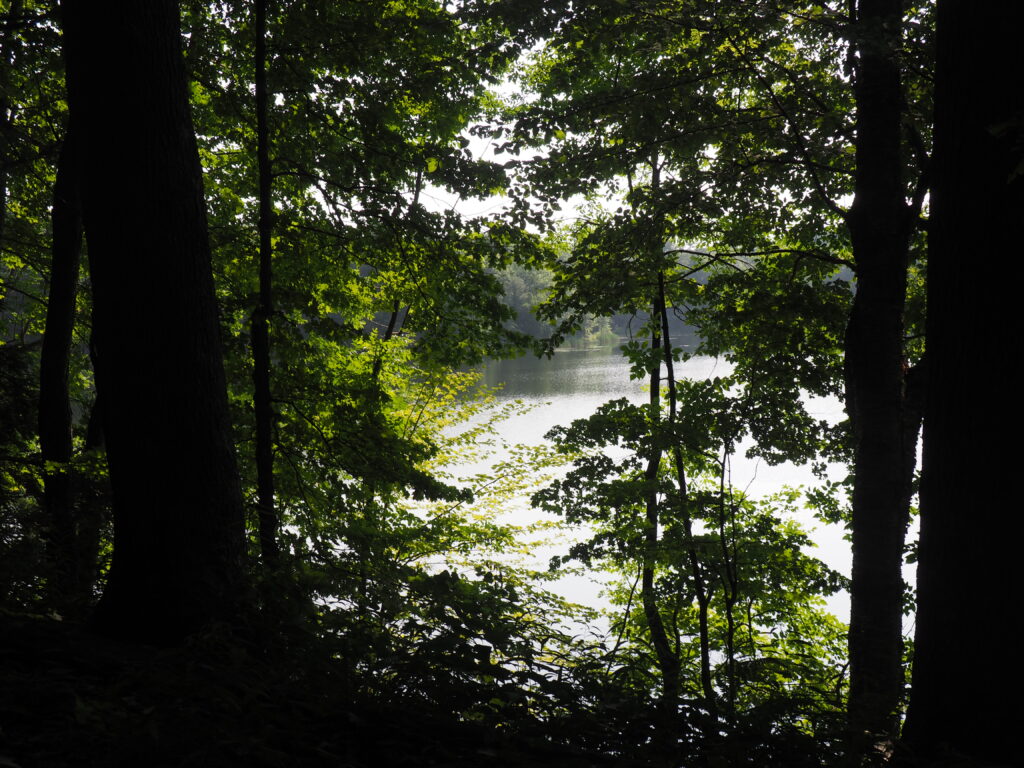
We decided to go to Woodstock because we’d never been there and it seemed like a nice little town in a state we knew to be beautiful, enough of a reason to drive out for a long weekend.



On our way into town, we stopped by Quechee Gorge and hiked from the visitor center by the road down into the gorge where people go to enjoy a swim in the Ottauquechee River (despite it taking quite a bit of effort to get there – and back), as well as over the road and along a forested path to take a look at the dam all hooked up to generate electricity.
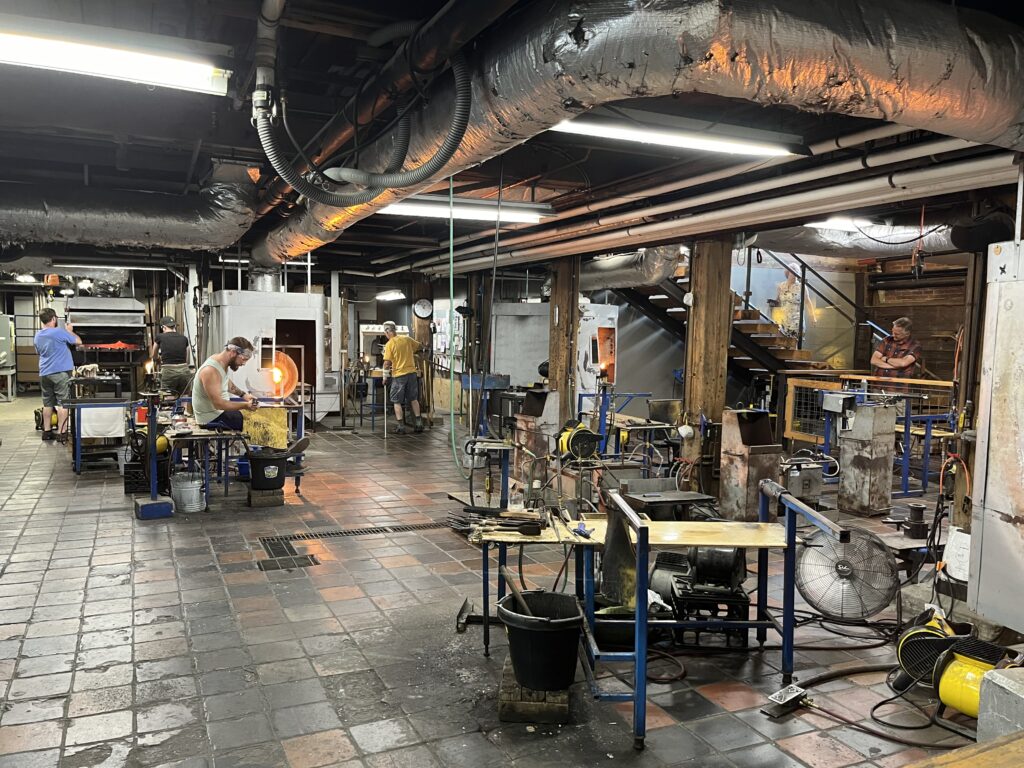
We also stopped by Simon Pearce in Quechee to browse the glassware and see the glassblowing hot shop downstairs, although most of the workers had just gone on break. We’d seen glassblowing before, but not glass being poured into small individual molds with the care even that operation takes.
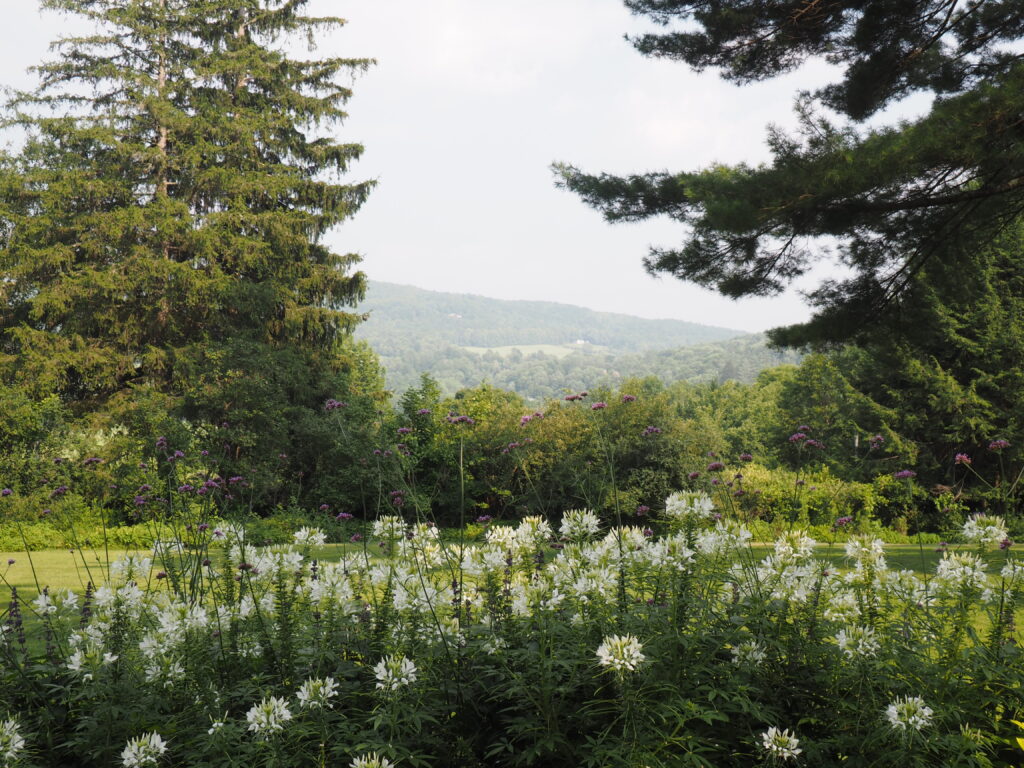
It’s easy to forget while enjoying the lush forests of New England that the land had been almost entirely clear cut in the early 19th century in the service of sheep. That’s why all those lovely stone walls meander through woods and mountains in what now seem the most unlikely places.

Marsh-Billings-Rockefeller National Historical Park was created to tell the story of the conservation movement and land stewardship through the history of the three families who lived in the house over time.



It’s a beautiful house. The woodwork is exquisite, the artwork quite nice. But, it’s the stories of those who lived there that were so well told by the ranger. George Perkins Marsh (1801-1882) grew up here loving and paying close attention to nature. After a few terms in Congress, Marsh served as a diplomat and was struck in his travels that humans had “brought the earth to a desolation almost as complete as that of the moon.” His Man and Nature (1864) was hugely influential and became a founding text of the conservation and environmental movement, arguing as it did for responsible stewardship of the land. Another Vermont native, Frederick Billings (1823-1890) purchased the Marsh property in 1869 and, appalled by the silted rivers and other devastation caused by the sheep industry, used his fortune accumulated as a San Francisco lawyer during the gold rush to convert the land to dairy cattle and rebuild the forests with scientific management. His wife and daughters continued his work after his death and into the next generation until his granddaughter Mary French married Laurence Rockefeller (whose family is justifiably admired for their support of conservation) in 1934. The Rockefellers then gifted the property as a National Park.
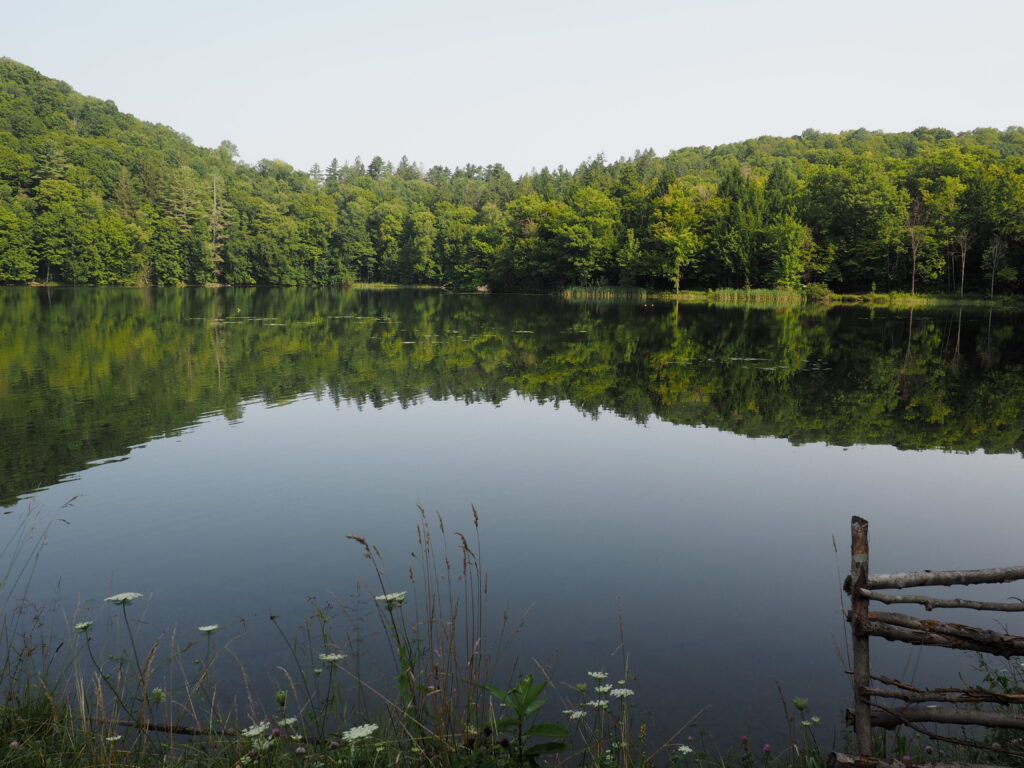
We have no idea why the pond (largely manmade) on the top of a ridge above the house and reached by 19th century carriage roads is called The Pogue. Current usage is derogatory, but the word’s origin is Irish for “kiss.” It’s a nice little destination and likely the reason it’s there, just under 2 miles from the house.

We’ve hiked networks of carriage roads and seen plenty of horse troughs, but none quite like this beauty situated at an intersection and fed from The Pogue.







Staying, as we were, in the heart of downtown Woodstock just a very short walk from The Green, we were also a short walk from Faulkner Park and the 19th century switchback trail up to the south peak of Mount Tom, making it a much less strenuous hike than straight up the mountain and popular with camp counselors taking young campers for a hike.

Always up for a detour into marginally obscure history, we headed out to Plymouth or Plymouth Notch, a tiny agricultural settlement not far from Woodstock where (born on the 4th of July) Calvin Coolidge (1872-1933) was born and raised, sworn in as President by his father (a Justice of the Peace) when Warren Harding shocked the nation by dying, and established his summer White House in the little dance hall above the general store. We arrived at the crossroads just as a state park ranger was beginning a tour, so we hopped in.

One of the most striking things about the Coolidge birthplace is that everything in the house(s) and outbuildings is from his time and are the actually furnishings, not antiques from that era brought in to provide an approximation of the time. So, above, is the bed in which Coolidge was born, in the room where he was born, covered with the quilt his grandmother had made. Honestly, it brought some shivers of recognition to Jim, reminding him of his grandparents and “home” in Central PA.
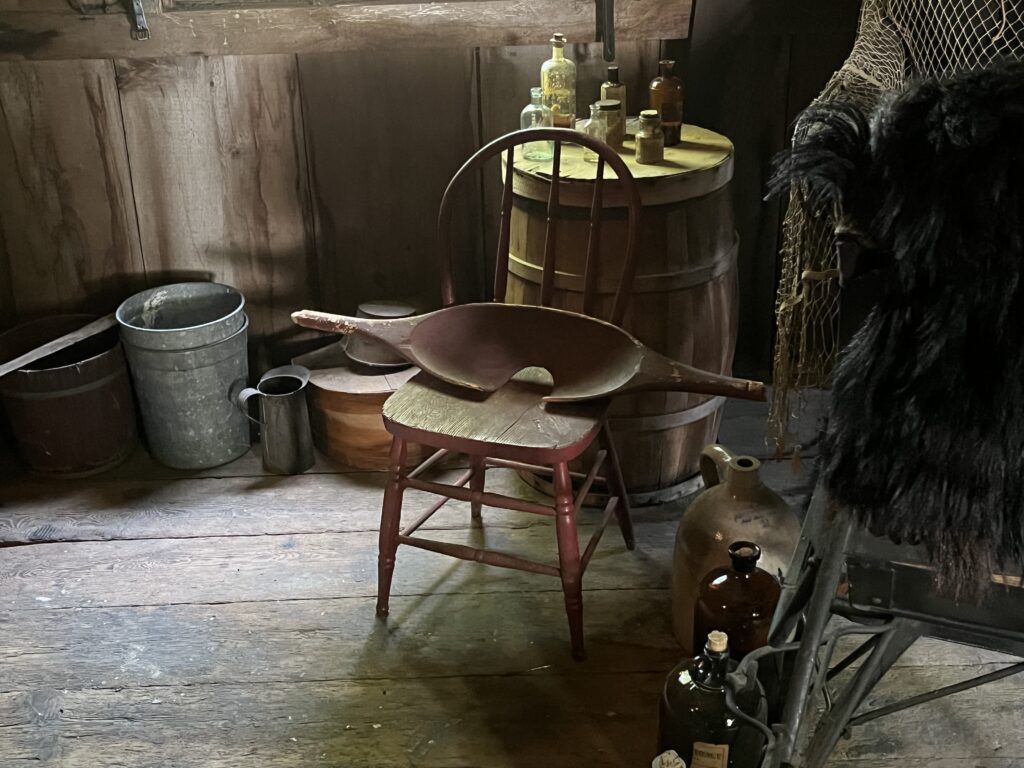
Then there’s the yoke believed to have been carved by a young Calvin for himself to help in carrying heavy buckets of maple sap. It was a different era, shall we say.

Coolidge’s father even, for a time, was a rural delivery mail carrier bridging, as did Jim’s grandfather, the era of horseback and horse-drawn delivery and the automobile.

More than adequately steeped in nostalgia, we sought out another maple creemee (https://www.woodstockscoops.com/copy-of-maple-creemee) and headed home to Cape Cod.

